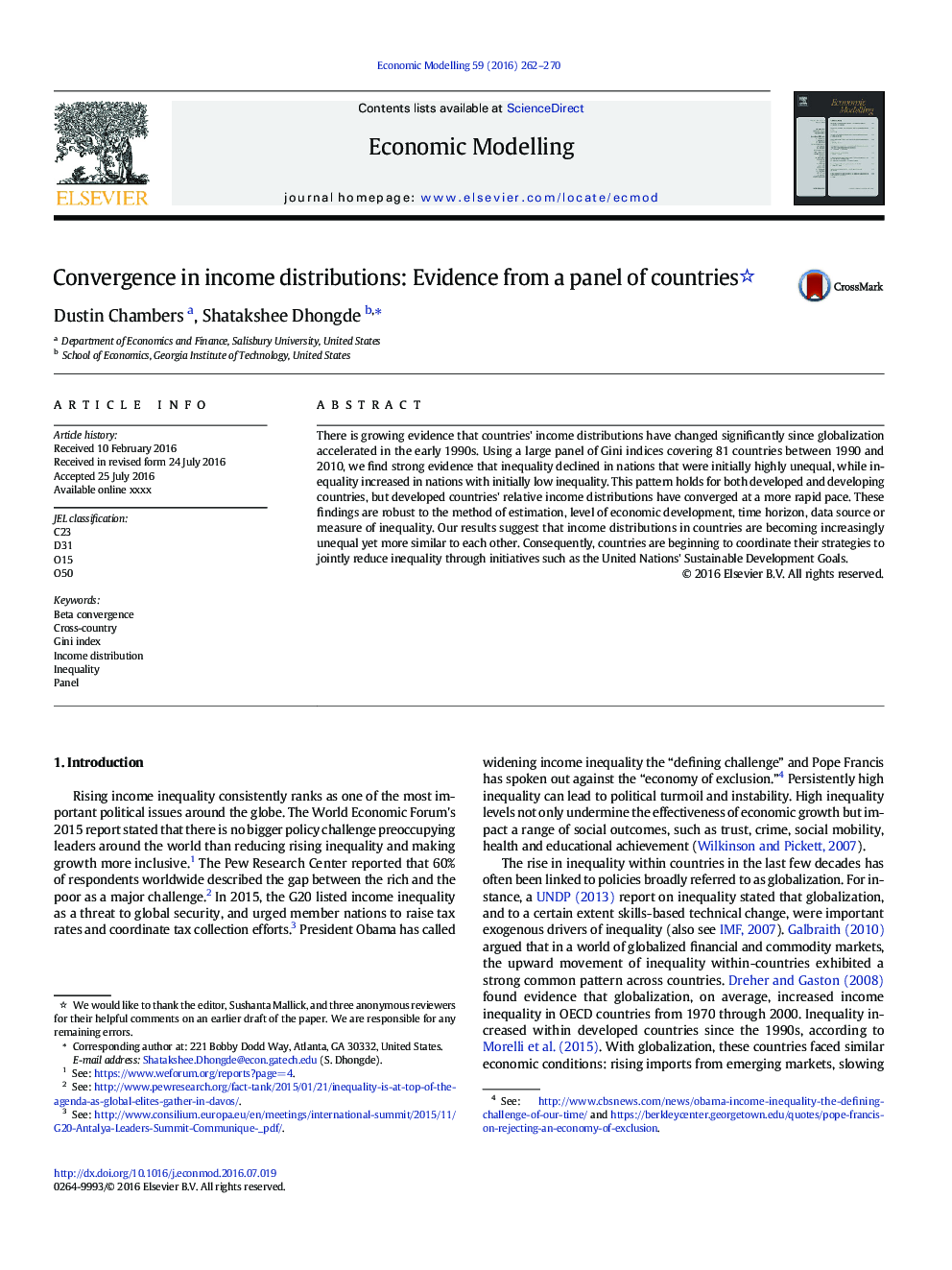| Article ID | Journal | Published Year | Pages | File Type |
|---|---|---|---|---|
| 5053292 | Economic Modelling | 2016 | 9 Pages |
Abstract
There is growing evidence that countries' income distributions have changed significantly since globalization accelerated in the early 1990s. Using a large panel of Gini indices covering 81 countries between 1990 and 2010, we find strong evidence that inequality declined in nations that were initially highly unequal, while inequality increased in nations with initially low inequality. This pattern holds for both developed and developing countries, but developed countries' relative income distributions have converged at a more rapid pace. These findings are robust to the method of estimation, level of economic development, time horizon, data source or measure of inequality. Our results suggest that income distributions in countries are becoming increasingly unequal yet more similar to each other. Consequently, countries are beginning to coordinate their strategies to jointly reduce inequality through initiatives such as the United Nations' Sustainable Development Goals.
Related Topics
Social Sciences and Humanities
Economics, Econometrics and Finance
Economics and Econometrics
Authors
Dustin Chambers, Shatakshee Dhongde,
